Like Zoe
“Do not cry, my dear, I will return as a hero or die a hero,” were the last words of Zoya Kosmodemyanskaya, told by the mother before going to the front. It is difficult to explain now why young people dreamed of giving their lives for their Motherland, but the fact remains: in the very first days of the war, thousands of applications were sent to the military registration and enlistment offices and committees of the Komsomol asking them to send them to the army. When the danger of seizing Moscow arose in October, four rifle divisions were made up of volunteers — almost 80 thousand people. Among those who wish - a huge number of girls. Including Zoe.
Her fate is as simple as the fate of many of her peers: she was born, studied, joined the Komsomol, went to the front, died. There were many such girls even in the part where Zoe served. It is enough to remember Vera Voloshin, who went with her on one mission, was captured, heroically perished, the solo before the execution of the International, and for decades was considered missing. 16-year-old Larisa Vasilyeva from the same part was taken prisoner in the village of Popovka in January 1942, raped, brutally tortured and left to die, naked in the cold. Her last words were: "You will kill me, but not a single fascist jerk will leave alive from our land!" After the war, the villagers called daughters Larisa in her honor, but who in Russia knows about her? There were a lot of them, such girls. Lucky one Zoe.
Yes, lucky. Do not hear about her execution, the correspondent of the newspaper "Pravda" Peter Lidov, a talented and meticulous journalist, Zoya, too, could go missing. But he heard and went to Petrishchevo. Together with him there visited the correspondent of "Komsomolskaya Pravda" Sergey Lyubimov, who also wrote about the partisan Tanya. Lyubimovsky essay is filled with such pathos that it becomes ridiculous to the modern reader. He would have gone unnoticed if he hadn’t been another essay - in Pravda. The essay by Lidov is structured in such a way that the Great Patriotic War is associated with all the wars that have ever occurred on the Russian land, and Zoya herself - “the daughter of the great Russian people” - becomes holy.
HOLY ZOYA
The genus Zoe counted many priests, the surname itself points to the saints Cosmas and Damian. The grandfather, Peter Ivanovich Kosmodemyansky, was the prior of the Osino-Guy church and tragically died on 1918: he refused to give the horses to the bandits, and after cruel tortures he was drowned in a pond. In Osino-Gayah, he is now revered as a saint. In 2000, documents were prepared for its canonization by the Russian Orthodox Church, but the results are unknown. After the death of his father, the eldest son Anatoly left his studies at the seminary and took care of his family on his shoulders: in addition to his mother, he had to feed three underage brothers. Working in a combo, he became close with Lyubov Churikova and married her. Soon they had children, and some time later the young family was in Siberia. We sent Kosmodemyansky to the distant village of Shitkino or did they go of their own will? Afraid of expropriation or anti-religious persecution? There is no answer to this day.
Zoya's passport. In the column "On the basis of which documents the passport was issued" the date of issue of the birth certificate is written
After Anatoly and his family left for Siberia, the traces of his mother and brothers are lost. It is only known that none of the brothers got married anymore and left the children.
Did Zoe know about the grandfather's martyrdom? Almost every summer, the girl spent in Osino-Gayah, and it is unlikely that she was passed over by the stories of fellow villagers, who for many years passed from word of mouth history about a local saint. It is also doubtful that the son of a priest and a student of the seminary Anatoly decided not to baptize his children. However, accurate information was not preserved, but Zoya died with words about Stalin, and not about God, without leaving evidence of her faith. This fact is decisive in the refusal of the Church to rank the Soviet martyr as a saint.
BIRTHDAY
Zoya was born in Tambov in 1923, two years later, brother Alexander was born. Sasha's birthday is 27 July 1925 of the year. But the date of birth Zoya still raises questions: 8 or 13 September was born the heroine? Metric books from the local Church of the Sign of the Sign were confiscated even before her birth, but in the passport it is clearly distinguishable - 13 September 1923 of the year. Some historians claim that the real date of birth is 8 September, and 13 is the date of registration of the newborn at the registry office.
Seventh grade, 1937 year. Shura - the first right in the bottom row, Zoe - the sixth from the right in the top.
Director of the Osino-Gai Museum of Kosmodemyansky Sergey Polyansky, who was friends with Zoya's mother, declares that the real date is 8, but the 13 number was significant for the family, so the birth of the daughter was recorded on September 13. What exactly was the sign, Zoe's mother did not tell. Perhaps this was baptism? However, this is only an assumption.
LIFE IN MOSCOW
In the Siberian Shitkin Kosmodemyansky lived just a year, and then moved to the capital. Most likely, this contributed to the sister of Lyubov Timofeevna Olga, who worked in the People's Commissariat of Education. Anatoly Petrovich got a job as an accountant at the Timiryazev Academy and got a room in one of the wooden houses on the Old Highway (now Vuchetich Street), and later - in Aleksandrovsky Proezd (now Zoya and Alexander Kosmodemyansky Street). None of these houses has been preserved, like the real houses of the Kosmodemyansky and Churikovs in Osino-Gayakh or the original building of the Moscow 201 school where Zoya and Sasha studied. About 10 years it stood abandoned, then there was a fire, now it is reconstructed, almost rebuilding again. Back in 1950's, Kuntsevo houses on Partizanskaya Street, where part of Zoin was based, were demolished. Time destroys the traces of heroes ...
In 1933, Anatoly Petrovich died from volvulus, he was buried at the Kalitnikovsky cemetery. In 1937, all the archival books burned, and after the death of Lyubov Timofeevna in 1978, no one visited the grave, so it is not possible to find it. According to Zoya Klavdiya Miloradova’s fellow soldiers, the grave was located right next to the cemetery entrance. Now there is a monument to the soldiers who died in World War II. Most likely, the abandoned grave of Anatoly Petrovich was demolished to erect the monument.
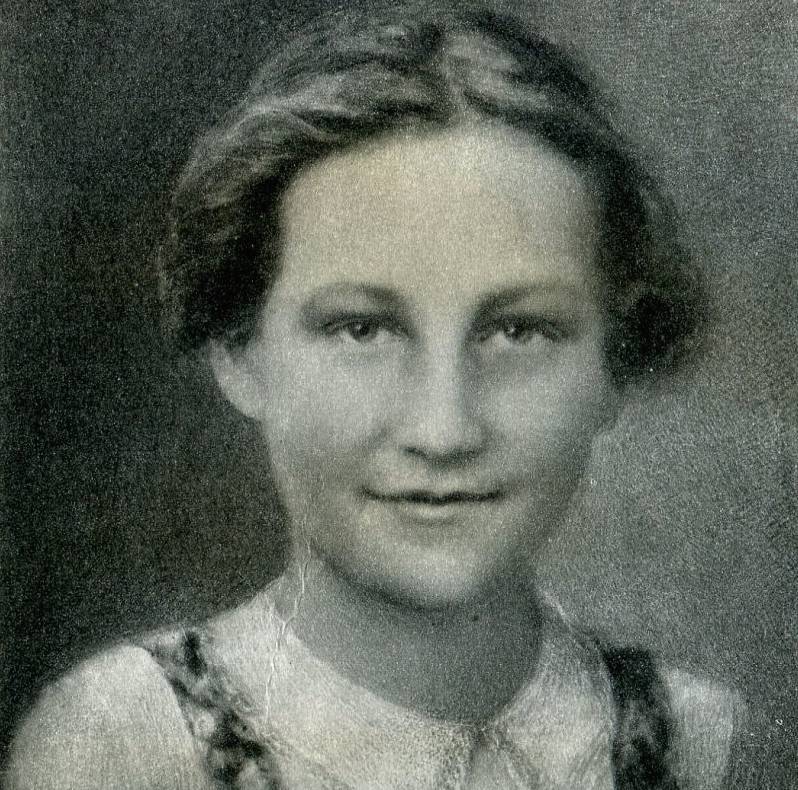
To feed young children, Lyubov Timofeevna, who has worked as a teacher all her life, decides to radically change her occupation: she goes to work at the plant as a compressor — they paid much more for working professions. She returned to teaching only four years later when she was unable to perform difficult work because of her health: in 1939 she got a job teaching at an adult school at the Borets plant. At about the same time, children began to help financially. Zoya and Sasha copied drawings and maps for the All-Union Geological Fund. Brother Lyubov Timofeevna Sergey worked in this institution, he helped his nephews with work, because apart from the everyday small expenses, one fairly large emerged: education in the senior classes became paid, and the Kosmodemyansky family, despite the loss of the breadwinner, was not released from the fee.
By the way, the only preserved Moscow address, which remembers the heroic brother and sister, is the address of their uncle Sergey: Bolshaya Polyanka Street, 15 house.
SCHOOL AND ILLNESS
The best thing in Zoe's school was literature, she loved to read, wrote excellent essays, learned the conditions for admission to the Literary Institute. Sasha was fond of mathematics and painting, his drawings decorated not only the walls of the Kosmodemyansky apartment, but also the school: illustrations for Gogol's Dead Souls hung in the literary class. He could not decide whether to become an engineer or an artist.
In fact, this picture was not so rosy: the often-mentioned “nervous disease” of Zoe, which began in the eighth grade, was caused by misunderstanding on the part of classmates, and the girl’s disappointment in her friends. Not all Komsomol members completed the work on training illiterate housewives - this was the initiative of the grouping Zoya. Not everyone was serious about studying, and this she also took to heart. After she was not re-elected by the group organizer, Zoe closed in and began to move away from her classmates. She later contracted meningitis. Both times she was treated at the Botkin Hospital, where people with mental illness were also observed at that time. This is what led unscrupulous historians in the 1990 to attribute schizophrenia to her. The certificate issued for the school refutes such conjectures: “For health reasons, it’s possible to start studying, but without fatigue and overload.” A mentally unhealthy person would simply not be allowed to attend classes in a regular school.
WAR
Since the beginning of the war, Zoya has tried many lessons: sewing sewing bags and buttonholes for the cloak-tents, along with the class collecting potatoes on the labor front. For several days she worked as a puncher at the factory “Borets”, she entered the courses of nurses. However, all this seemed to her too little contribution to the victory. She decides to go to the front and for this, among other volunteers, she waits for hours in a queue to receive the secretary of the Moscow Komsomol Committee, Alexander Shelepin. He approved her candidacy and sent to the reconnaissance and sabotage part number 9903. True, the commander of the unit Arthur Sprogis initially refused to accept it. She looked too beautiful and noticeable for a scout. Zoe sat up late at night near his office and was still accepted into the unit. This happened on October 30 1941.
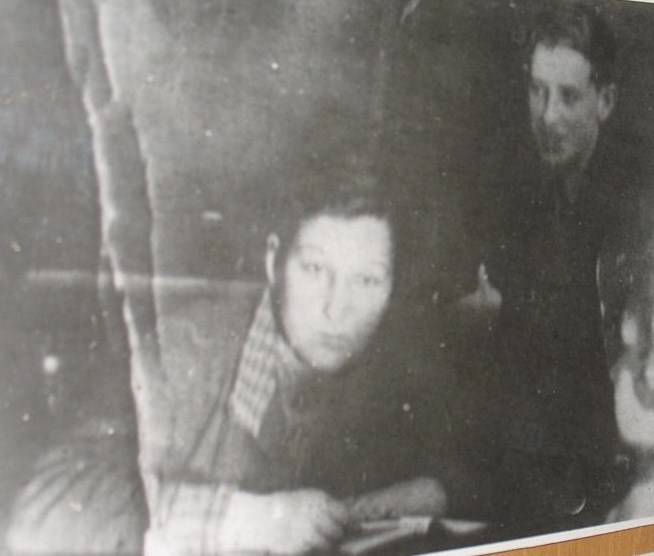
Zoya-group organizes Komsomol meeting. A rare photo from the museum of the 201 school
Further events are also known: on the morning of 9, the next morning, Zoya’s mother went to the tram stop, she got to the Sokol metro station, and from there to Chistye Prudy. She arrived in Kuntsevo by a truck carrying a group of intelligence officers from the Colosseum cinema (now the building of the Sovremennik theater) at the kindergarten, but as the Germans approached Moscow, they were forced to change their location close and safe Kuntsevo). A few days of training in mining and shooting, which Zoya was engaged in not only in her group, but also in person with other groups, and on November 4, having taken the oath and now being considered Red Army men, the group of scouts went to the rear of the enemy. Their task was to explore and mine the roads. The first raid in the area of Volokolamsk turned out to be successful, on November 8 the group returned to the base. Despite the fact that Zoe fell into the river and caught a bad cold, she did not agree to go to the hospital, and the doctor of the military unit No. 9903 treated her there, at the base.
It is known that all the fighters who left the front line were entitled to one-day leave for Moscow. According to the testimony of Claudia Miloradova, who had no relatives in the capital, Zoya invited her to visit, but neither her mother nor her brother turned out to be at home, apparently, they worked late. Zoya left a note to her family, and the girls went back to the part in a truck waiting for them at the Coliseum. Lyubov Timofeevna never mentioned that note once.
SECOND RAID
November 19 (according to other data, on the night of November 22) two groups went to the rear of the Germans - Pavel Provorova, which included Zoya and Vera Voloshin, and Boris Krainova. We walked together, intending to divide already in the rear. Immediately after crossing the front line, the general group was fired upon, and it split in two. The fighters ran in different directions and spontaneously joined in the forest. Zoya was in the same group, Vera - in the other, gone towards Golovkov. There the detachment again came under fire, and Vera, who was in head reconnaissance, remained lying on the field. It was not possible to return for her - the Germans arrived too quickly, and in the morning the comrades did not find her body ... After many years, the fate of Vera Voloshinoy will be cleared up by Moscow journalist Georgy Frolov.
Vera Voloshin. On the back of the photo on the right is the inscription: “Eugene from Vera. 1941 year "
The group of Boris Krainov, in which Zoya was, was moving towards Petrishchev, where it was necessary to damage the knot of the German connection - a counterattack was planned. On the way, many fighters caught a cold, and the commander decided to send them back to base. So there are five people left in the group: Boris, Zoya, Klava Miloradova, Lidiya Bulgina himself (a day later, Klava and Lida, having gone out on reconnaissance, got lost in the forest and went to the location of their units, bringing valuable documents repulsed from a German officer), and Vasily Klubkov, which is worth special mention.
Vasily Klubkov
This person was actually listed in the list of soldiers in the military unit No. 9903, he existed. The version of the likely betrayal sounded immediately after his return "from captivity". He passed a check in the front's intelligence department, but on February 28 of 1942 was arrested by officers of the Special Department of the NKVD, and on April 12 the military tribunal of the Western Front sentenced him to death. During interrogation, he confessed that in Petrishchev they seized him, he cowardised and betrayed Zoya and Krainova to the Germans, with whom he came to the village.
“Hour in 3 – 4 in the morning, these soldiers led me to the headquarters of the German unit located in vil. The ashes, and handed over to the German officer ... he pointed a revolver at me and demanded that I give out who came with me to set fire to the village. At the same time, I showed cowardice and told the officer that there were three of us in all, I named the names of Boris Kraynov and Zoe Kosmodemyanskaya. The officer immediately gave some orders to the German soldiers present there in German, they quickly left the house and in a few minutes brought Zoya Kosmodemyanskaya. Whether they detained Krainov, I don't know. ”
Thus, from the interrogation report from 11 – 12 in March 1942, it follows that Klubkov was seized at 3 – 4 in the morning of November 27 in the village of Pepelische, Zoya was brought in a few minutes, then she was stripped and beaten and then beaten in an unknown direction .
We get completely different information from the testimony of a resident of the village of Petrishchevo Maria Sedova from February 11: “They brought her in the evening, hours in 7 or 7.30. The Germans, who lived at home with us, shouted: "Partisan, partisan!" Trousers I do not know what color, dark ... They threw the balaclava, and he kept rolling around. Mittens took the German cook. She had a protective color cape, she was stained in the ground. I have a tent now. We kept her with us for 20 minutes. ”
What is this, if not the initial short search, after which the girl was taken away for questioning? Although there is no other Russian intelligence officer in the certificate.
The photo accompanying the first essay of Karl Nepomnyashchy in “Komsomolskaya Pravda”, in the December issue of 3, which Lily brought home on December 7 to show the family
Not a word about Klubkov and the testimony of other villagers. And in the records of Peter Lidov there is a mention of him: “9 July 1942. Today in the tribunal of the NKVD troops of the Moscow district I read the case of Sviridov, who betrayed Tanya and was sentenced to death on July 4. The fact that he participated in the capture of Zoya and was the first to notice her was told to me in Petrishchev on January 26. I was with him, and he behaved very suspiciously. I was not surprised that my suspicions were justified. The Sviridov case completely refutes the version that Zoya was betrayed by her comrade in the Clews squad. The coils are a traitor, but he did not betray Zoya. ”
Klubkova was caught on November 27, and they took Zoya on the evening before the execution. Two years later, the exact number will become clear, and then the residents of the occupied territories did not receive newspapers and did not listen to the radio, therefore the dates were approximate, hence the “first days of December” mentioned in all documents. The exact date - 29 of November - became known only in 1943 from captured Carl Bauerlein, non-commissioned officer of the 10 th company of the 332 infantry regiment (this regiment was stationed in Petrishchevo in the autumn and winter of the 1941 th). Subsequently, the date of November 29 was confirmed by other captured soldiers and officers of this regiment. They did not mention Klubkov: either this information is still classified, or Klubkov was captured elsewhere and did not betray Zoya.
The further fate of the captured girl is known and practically does not differ from that written in the textbook essay by Peter Lidov “Tanya”.
Zoe's identification was carried out several times. At first, her Komsomol ticket with a photo from a pile of other tickets was chosen by the local residents; then the school teacher Vera Novosyolova and classmate Viktor Belokun, dug from the grave, were identified as one of the few who were at that time in Moscow and not at the front or in the evacuation, then comrades and finally brother Alexander and mother Lyubov Timofeevna. They had a conversation with the latter first and showed the photos of the executed girl, taken by the Pravda photojournalist, - they found out to Zoya in Tanya. The case was responsible, representatives of the Moscow and Central Komsomol committees were present at all identifications. Remain the possibility of at least some kind of mistake, Zoya Kosmodemyanskaya would not receive the title of Hero, and the search for relatives of the deceased “Tanya” would go on.
In 1990's, there were many who wanted to expose the official version: starting with the fact that Zoya was betrayed by fellow soldier Vasily Klubkov, and ending with the fact that she did not die at all in Petrishchev. The historians of the new wave presented half-mythical versions as a sensation and completely ignored the fact that all this was discussed in 1960-s and was safely forgotten due to lack of evidence.
Ninth grade. Zoya is in the second row, fourth from the right, Sasha is in the first row, the first from the left. 1941 year
LIE ABOUT LIE
For example, it was claimed that for years information about female fire victims who had mocked the captive Zoya was classified. It is not true. Pavel Nilin wrote in detail about the trial of them in the essay “Meanness”. Information about Klubkov was printed not only in the army periodicals (article by Jan Milecki "Who betrayed Tanya", published in the newspaper "Red Star" 22 of April 1942), it is also in the popular children's story of Vyacheslav Kovalevsky "Do not be afraid of death", published in 1961 m
In the same story, a partisan detachment was described in detail: the training of volunteers, the place of basing, actions behind enemy lines. Even the names of the fighters and commanders were called, the latter in a slightly modified form: Sprogis became Progis, and the commissar Drones - Commissar Klenov.
The only innovation that 1990 introduced into this story is the designation of the detachment's activities: in literature and journalism it became known as the sabotage part No. 9903. In fact, it was so.
Fourth grade 201 school. Zoya is in the second row, fourth from the left, Sasha is in the third row of the far right. 1936 year
Information about the part number 9903 was not accessible to anyone, but about the arsons of the houses in which the Germans were accommodated, they wrote in the wartime newspapers. The most curious is the cycle of essays by Karl Nepomnyashchy, who described in detail about the raid of a similar detachment of saboteurs to the enemy's rear, about the defeat of the German headquarters and arson of houses with sleeping Germans in the village of Ugodsky Plant. Essays were published throughout December 1941. It is unlikely that someone from the readers of "MK" at that time had the idea to rebel: "Barbarism!". Everyone understood that there was a war "not for the sake of glory, for the sake of life on earth."
The attempts to defame Zoe’s brother and mother look just as groundless. Alexander Kosmodemyansky received his star of the Hero, among other things, because during the attack on Königsberg he volunteered to be the first to cross the channel to the side occupied by the Germans. The bridge, built by sappers, collapsed immediately behind him, the Germans - they had five guns - opened fire. Sasha managed to crush the whole battery with heavy fire. As his combat comrade Alexander Rubtsov recalled, “the self-propelled gun remained in that position for three days and held the battle. Then came our Tanks, restored the crossing, and Sasha returned to his regiment. " A week later, freeing the Firbrüderkrug, Sasha was killed by shell splinters. Initially, he was buried in the center of Königsberg, on Bismarck Square, but his mother asked him to be reburied next to Zoe, and she herself transported the body to Moscow.
Zoya with aunt Olga Timofeevna. Approximately 1936 year
The mother of the heroes of the Great Patriotic War, until the end of her days, lived on a small teacher's pension, transferring to the Soviet Peace Foundation all the fees for performances and publications about her children. When she died, she was buried next to Sasha - these are the rules of the Novodevichy cemetery: the cremated bodies are buried on one side, the uncreated - on the other. From the family they cremated only Zoya.
LEYLI AZOLINA
Zoya Kosmodemyanskaya became a symbol of the country, the personification of the feat. Leili Azolina has been missing for many years. The only memory of her is the name in the list of the dead students on a memorial plaque on the old building of the Geological Prospecting Institute near the Kremlin. But, even to allow officials to place her name on the board, the staff of the institute had to consciously enter erroneous data into the Book of Memory of Moscow: “She was buried in p. Petrishchevo Ruzsky district, Moscow region. " Needless to say that in Petrishcheva there is not and there was no her grave?
The name of Leyla Azolina was first sounded in 1960, when L. Belaya’s “Roads of Heroes” article was published in “Moscow Komsomolets” of 29 in November 1967 of the year: “A few days after that military - 24-hour vacation, which Lily Azolin spent with mother and sisters, the postman did not bring a newspaper to his mother, to Oktyabrskaya Street, to the house 2 / 12, to the 6 apartment: on that day, an essay by Peter Lidov about the German partisan Tanya and a snapshot was printed in the room. The face of the hanged out partisan was terribly like Lilino. ”
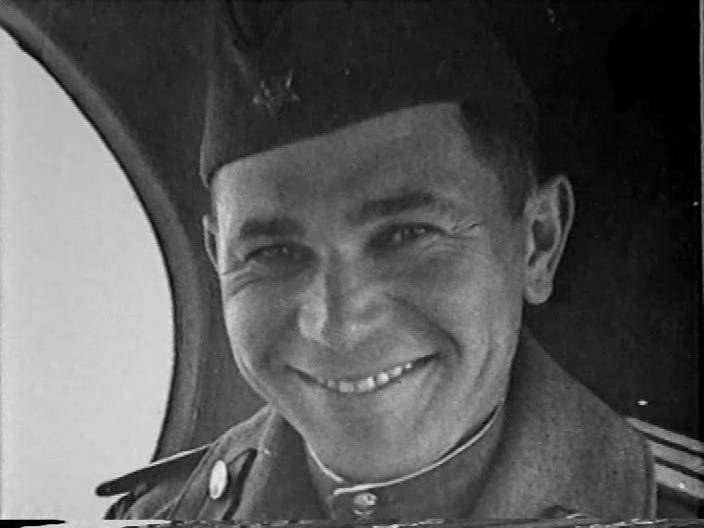
Peter Lidov, Pravda correspondent
This reckless phrase gave an impetus to numerous speculations that arose on the 1990 wave: some historians quite seriously stated that Zoe did not die at all in Petrishchev. They were not convinced by any facts, or eyewitness accounts, or even a forensic portrait examination of the photos of the executed girl, held in 1992, and once again confirming that Zoya Kosmodemyanskaya was in the photo. Some truth-seekers debunked the Soviet myth not only in the press, but also in the company of those who knew for certain that it was not Lily who died in Petrishcheva. The hunters were once again to inform the alternative version of her sisters Lydia and Tatiana, who are still alive today. Mother Valentina Viktorovna died in 1996, having lived 96 for years, but never waiting for news of her eldest daughter. After her death, the archive that she had been collecting all these years disappeared without a trace, and in which, according to her sisters, letters from Lily’s colleagues, her photos and documents that would have helped to clarify the girl’s fate, were kept.
“Mom used all her connections and acquaintances (and she was from Tiflis, was familiar with Beria), received a pass to the newly liberated Zvenigorod district and searched for Lily in all parts and hospitals for two months. Why there? She probably knew something, only she didn’t tell us. But Lily was nowhere to be found, ”says Lydia. She remembers her older sister well, unlike Tatiana, who turned four years old in July for 1941.
After the war, the archive of the Central Committee of the Komsomol could not find the statement of the national heroine Zoya with a request to send her to the front. It is still unknown what words she explained her desire to defend the Motherland. Lily's statement was probably not searched by anyone. However, the search report on the missing fighter has been preserved. It is known from him that she was called up by the Krasnopresnensky district military registration and enlistment office in October 1941 of the year, which came on December 7 home leave, and that, according to her comrades, she died a few days after that. A little more clarity in the fate of the missing girl was made by the historian Alexander Sokolov, who found Lili's photos in the archives near the soldier of the Special Purpose Detachment of the Western Front *. The photo was signed by the then living veterans of the OLATF: “Scout Azolina Lilya”. This fact gives historians the right to include the girl in the list of fighters of OLAP. Sisters Azolina confirm that the picture - Lily, exactly the same photo was kept in the family. It turns out that Lily never served with Zoya in military unit No. 9903, as some unscrupulous journalists said.
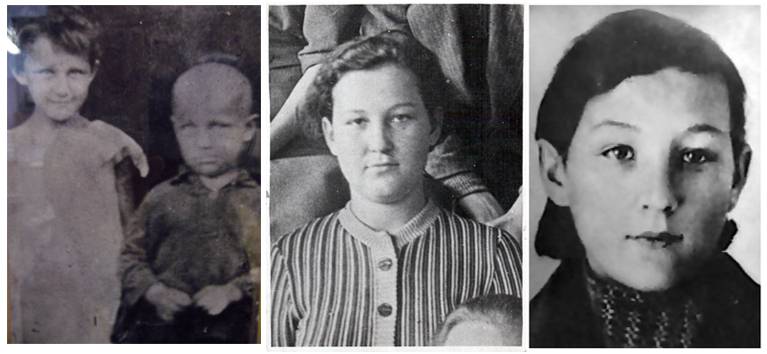
Little Zoya and Sasha. Approximately 1927 year
Zoe after illness
Photos from the Komsomol ticket
At the moment, it is impossible to accurately establish Lily's combat path: the witnesses are dead, the archives are kept secret, the memory of the aged sisters cannot reproduce the details. According to scraps of information, it is known that Lily joined the Krasnopresnensky Volunteer Battalion at the most difficult time for Moscow - October 16 of the year 1941. She studied communication with some fellow students at the Geological Prospecting Institute and died on the eve of her 19 anniversary - December 11 or 12 (the documents were not preserved, and Lili’s birth date her sisters remember only approximately - December 12 or December 13). Much needs to be clarified and supplemented, although, based on the many coincidences and fragmentary memories of Lily's sisters and colleagues, you can roughly imagine what work she did and how she died.
Probably for the first time, 12 November went to the rear of the enemy Lily as part of the newly created squad commanded by Colonel Sergey Iovlev. The raid took place in the area of the Ugodsky Plant, Black Mud and Vyskinichy. Its main task was technical intelligence: quietly connecting to the German cable, Lily, who knew German very well, collected data on the movement of the enemy troops, their weapons and offensive plans. Her work, like the work of many other intelligence officers, provided a quick counteroffensive by the Soviet troops near Moscow.
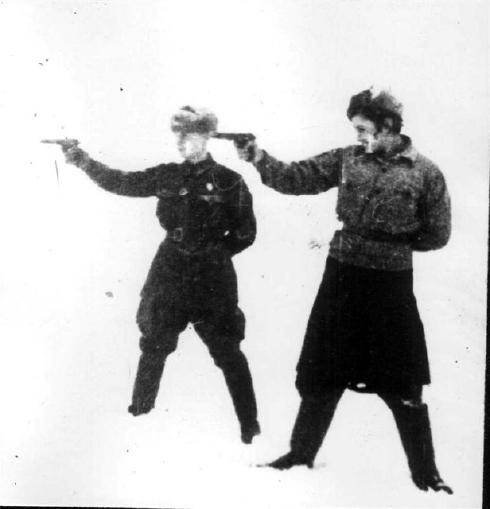
A photo found by the researcher of the OLAF Alexander Sokolov in the archives of the detachment with the signature "Scout Lily Azolin"
The first campaign was successful, the detachment returned almost without loss to the base. After it, two more raids took place, and just during a brief rest between them 7 December, Lila managed to visit her mother and sisters. No more dates.
The decree awarding Zoya Kosmodemyanskaya the title of Hero of the Soviet Union was published by all the central 16 newspapers of February 1942. Together with her, this title was given to the commissioner of the partisan detachment Mikhail Guryanov, who was hanged by the Germans on November 27 in the village of Ugodsky Plant. Guryanov participated in the famous operation to defeat the German headquarters in this village. He was captured and executed after cruel torture. In the same operation, the aforementioned Karl Nepomniachtchi participated. He was seconded by the editors to the Special Purpose Squad, went all the way with him - about 250 km through the forests of the Moscow region - and returned to the base only on November 26. His first essay was printed in 3 December, KNS 1941, and was accompanied by a photo of commander Nikolai Sitnikov: a dozen people walk along the edge of the forest.
The photo accompanying the first essay of Karl Nepomnyashchy in “Komsomolskaya Pravda”, in the December issue of 3, which Lily brought home on December 7 to show the family
The third figure is female, warmly wrapped up in a scarf - Lily. According to her sisters, this girl brought the newspaper home on the day of her leave. The room was kept for a long time in the family, but over the years it has been lost.
Thus, on the day of the heroic death of Zoya (fires began in Petrishcheva in the evening of November 27, November 28 was caught by Zoya, 29-th was executed) Leyla Azolina just returned to Moscow, to the Tushino airfield. It was there that the detachment was based, there afterwards Lily's mother went to look for a daughter. But even if we admit a completely untenable idea that Lily did not return from the first raid of the OLPR, she should have perished in the Kaluga region, and from there, at least 60 km from Petrishchev. However, these are only assumptions that do not have the right to life: besides the newspaper, a letter from a colleague who saw the death of Lily with his own eyes was kept in the Azolins for the family. According to him, during the third raid in the rear of the enemy, the conductor led the detachment to reconnoiter the enemy, an exchange of fire ensued, Lily waved her hand and fell into the snow. This happened after December 11 - on that day the detachment left the base. Further history is covered with obscurity: a colleague himself in that battle was wounded and for a long time was reported missing. Commander of the detachment George Yesin recalled after the war: “On the eleventh of December in the village. Hawk In this area, I was given intelligence information and a guide. But the conductor brought my squad to the advanced units of the enemy, and he managed to escape. In general, it seemed to me strange where the conductor leads us ... In fact, the detachment was aimed at the enemy's defense, which the advanced units of the Fifth Army could not break through. We got involved in the battle, suffered losses and retreated. ”
This happened on the days of the counteroffensive of our troops. In the heat of battle, no one began to search for traces of a missing signaller, and there was no such opportunity. Information about the post-war mass graves in that area is also missing, and, most likely, the dust of Lily, like hundreds of other missing fighters, is still located near the village of Yawrebka of the Zvenigorod district. However, even this information is enough to put an end to the absurd speculation that the girl who died in Petrishchev was Lily.
No matter how trite the phrase may be that the war is not over until the last soldier is buried, but this is true. We did not start a war, however, we are to finish it: to search, bury, remember.
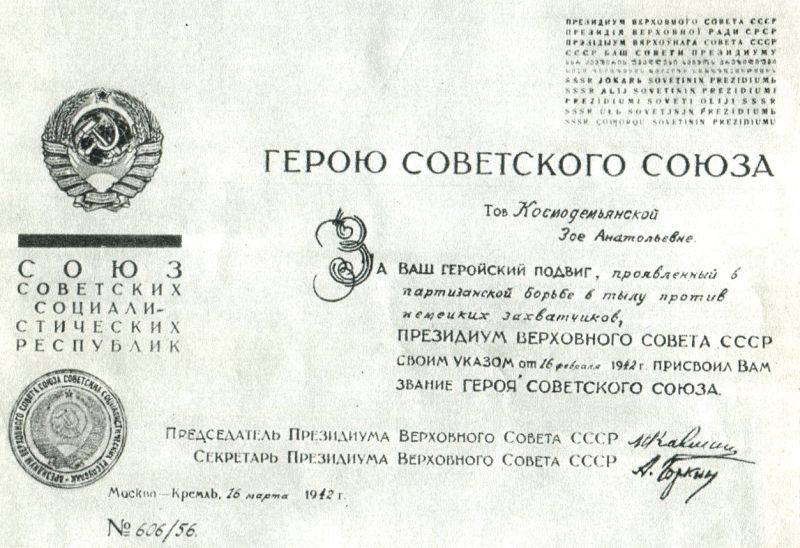
Letter on awarding Zoya Kosmodemyanskaya the title of Hero of the Soviet Union
* In the second floor. October 1941 of the year, on the instructions of the commander of the Western Front, Army General Georgy Zhukov, on the basis of the reserve of the Military Council, began to form a special landing battalion transformed into the Special Task Force of the Western Front (ONZF). In contrast to the small (up to 100 people) of the Special Forces of the Western Front, it was in fact the Special Purpose Squad of the Military Council of the Western Front with a number of 600 people.
The Special Purpose Detachment was made up of fighters and commanders who had previously taken part in hostilities. Recruitment - on a fully voluntary basis, after examination and verification. The structure of the unit formed included soldiers and commanders from the reserve of the Military Council of the Western Front, airfield service units, political administration and the intelligence department of the front. The tasks of the detachment included, in particular, reconnaissance, sabotage on roads and in settlements, the destruction of manpower, equipment and enemy headquarters, the seizure, retention of bridges and crossings until the approach of our troops, the seizure of support systems for airfields.
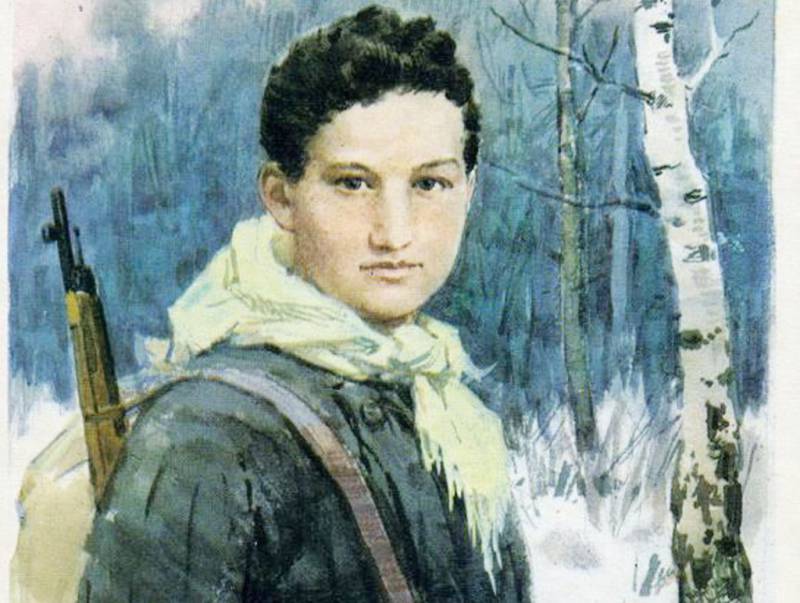
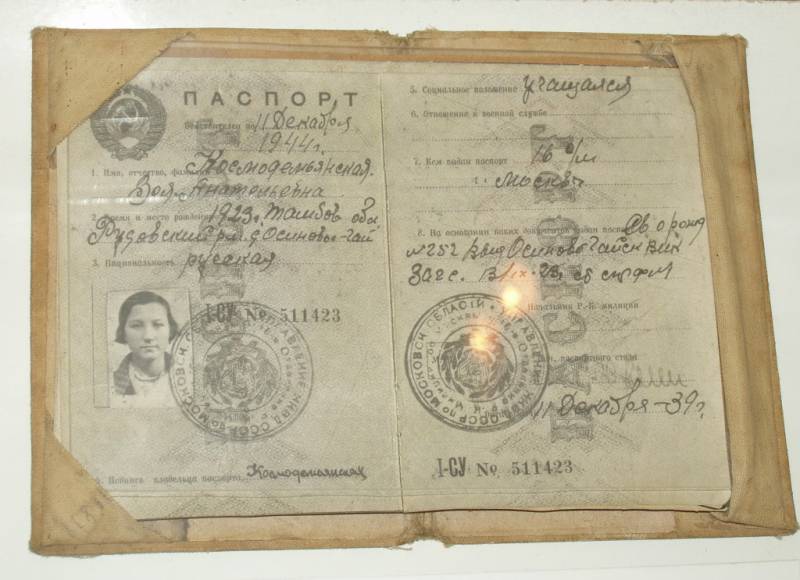
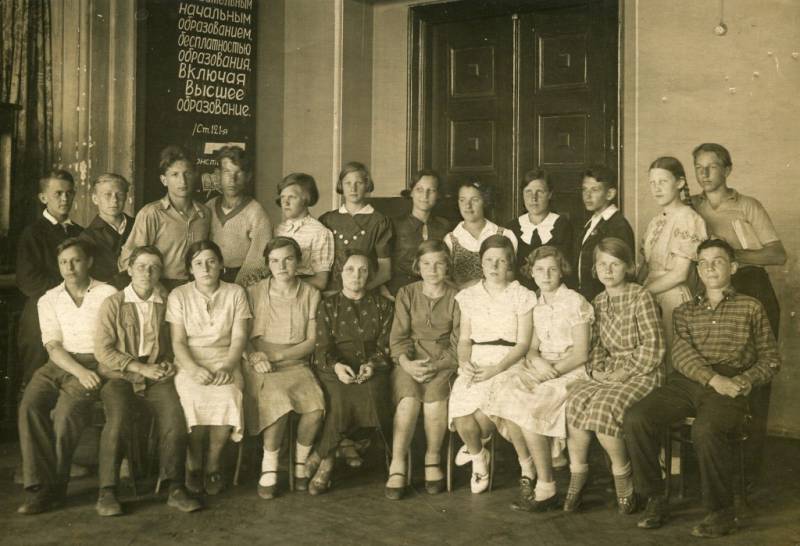
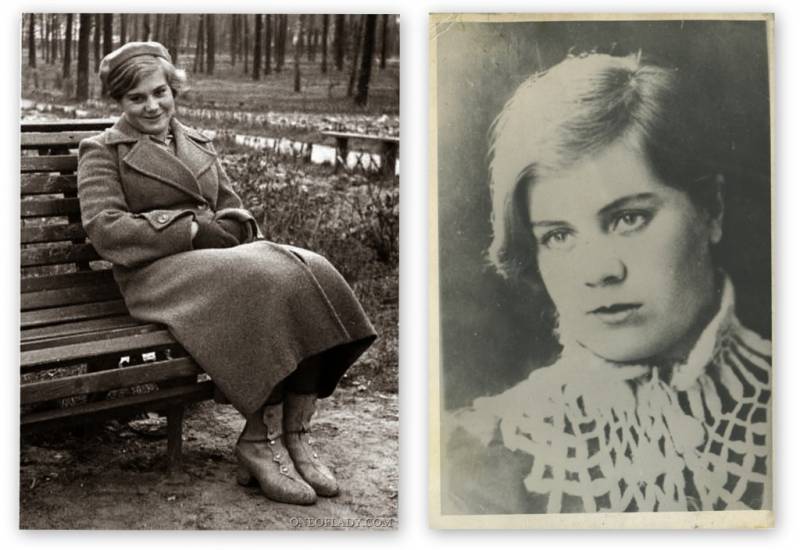
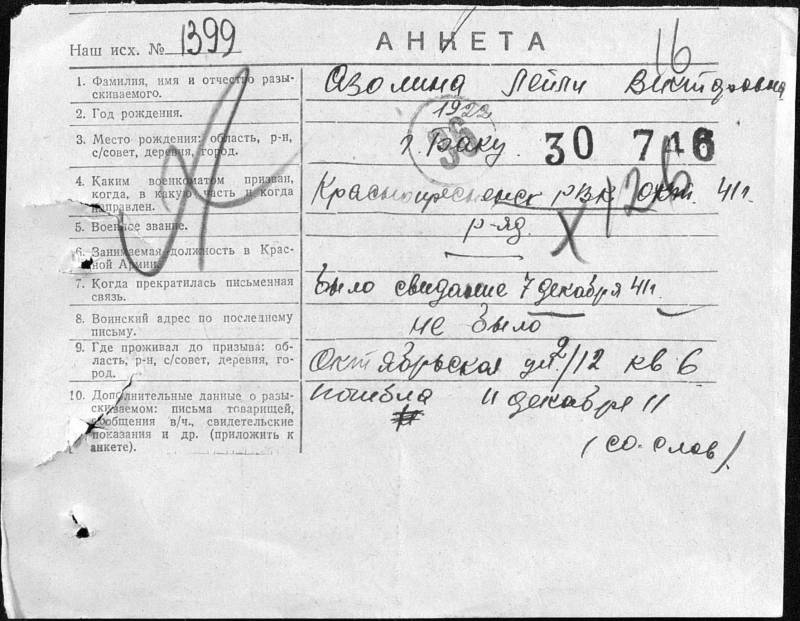
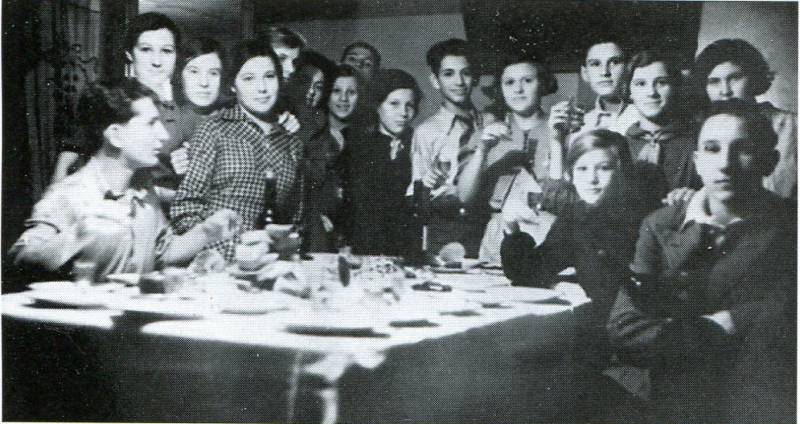
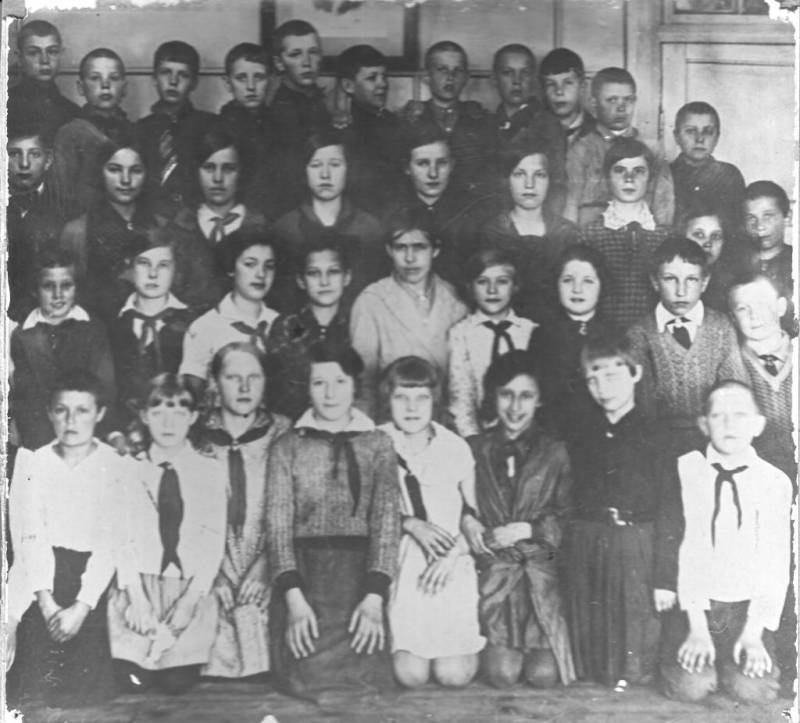
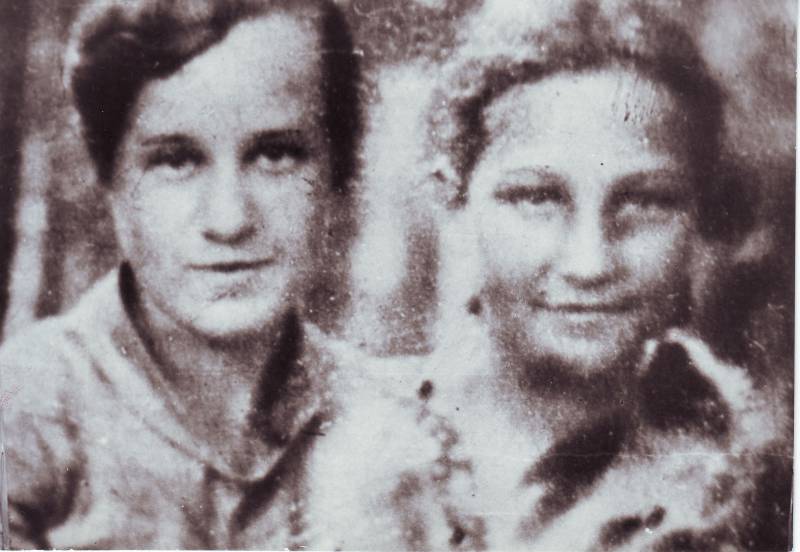
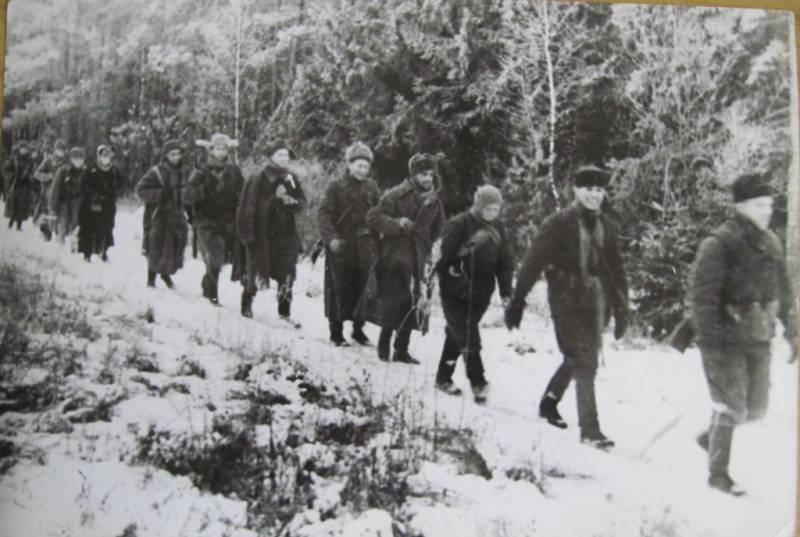
Information